The NVIDIA GeForce GTX 1080 Preview: A Look at What's to Come
by Ryan Smith on May 17, 2016 9:00 AM ESTGaming Performance, Power, Temperature, & Noise
So with the basics of the architecture and core configuration behind us, let’s dive into some numbers.
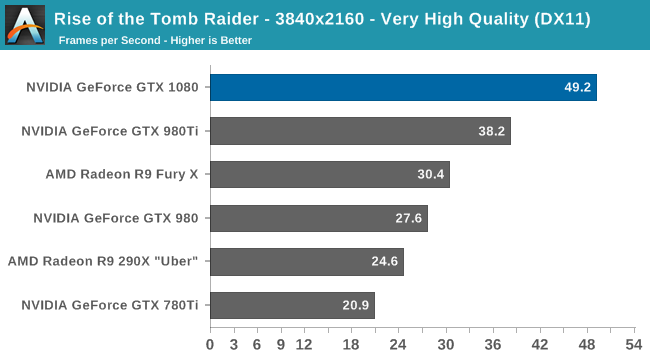

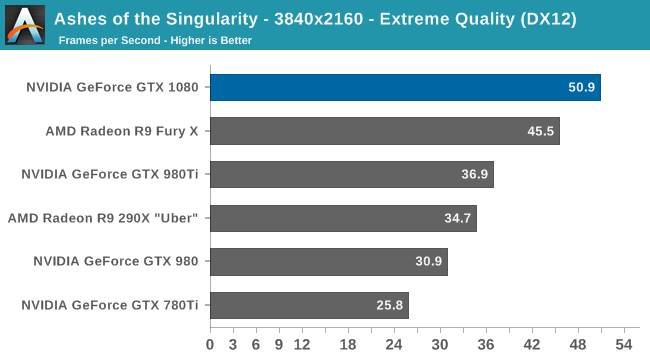

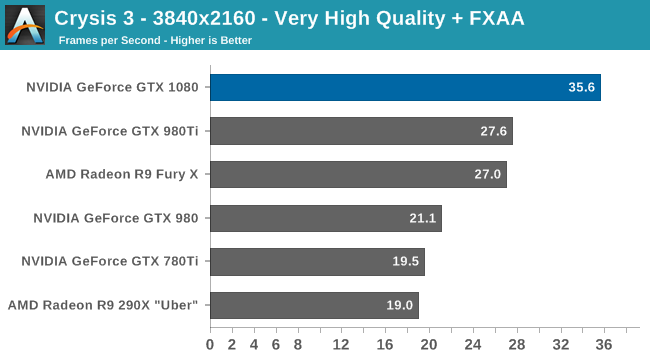
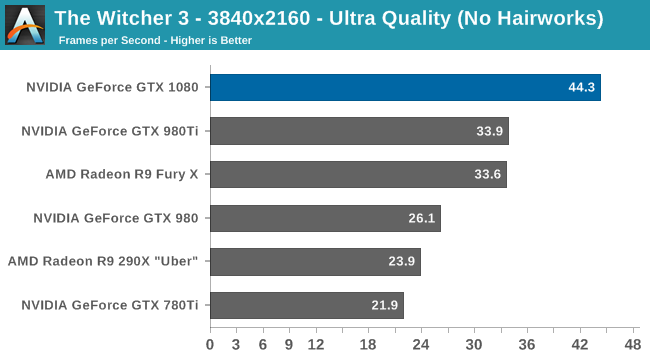
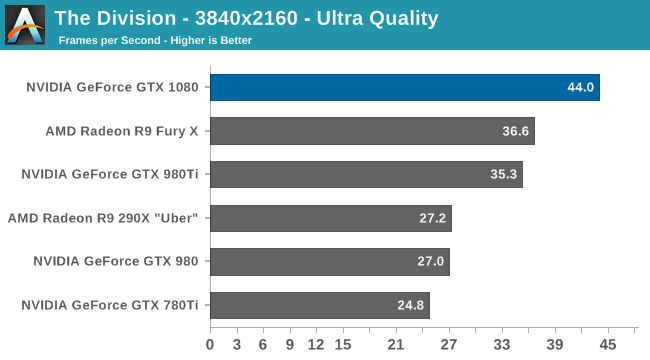
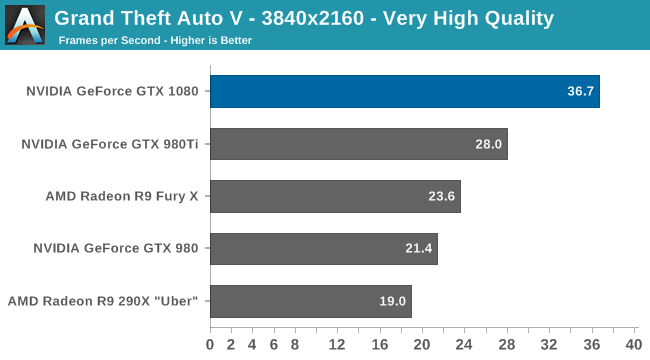
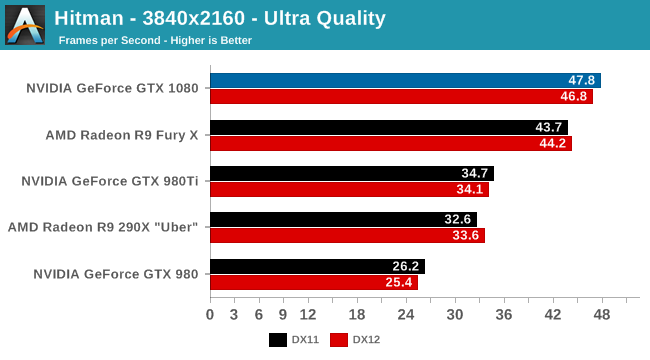
As the first high-end card of this generation to launch, NVIDIA gets to set the pace for the market. At the risk of being redundant the GTX 1080 is now the fastest single-GPU card on the market, and even at 4K it wins at every single gaming benchmark, typically by a good margin. In practice we’re looking at a 31% performance lead over GTX 980 Ti – the card the GTX 1080 essentially replaces – with a similar 32% lead over AMD’s Radeon R9 Fury X. Meanwhile against the slightly older GTX 980, that gap is 70%.
On a generational basis this ends up being very close to the 74% jump in 4K performance going from the GTX 680 to GTX 980. And although the pricing comparison is not especially flattering for NVIDIA here, it should be evident that NVIDIA isn’t just looking to sell GTX 1080 as an upgrade for high-end Kepler cards, but as an upgrade for GTX 980 as well, just 20 months after it launched.
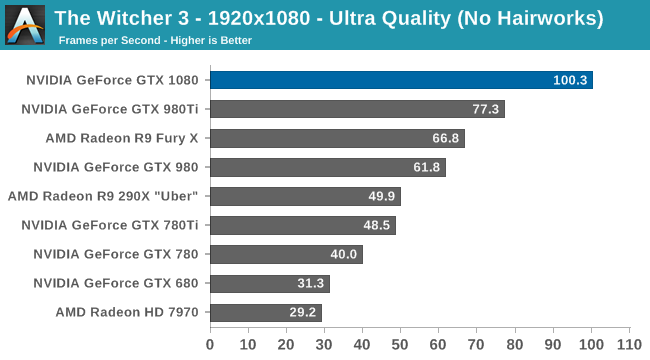
I also wanted to quickly throw in a 1080p chart, both for the interest of comparing the GTX 1080 to the first-generation 28nm cards, and for gamers who are playing on high refresh rate 1080p monitors. Though this will of course vary from game to game, roughly speaking the GTX 1080 should be 3x faster than the GTX 680 or Radeon HD 7970. This is a good reminder of how architectural efficiency has played a greater role in past years, as this is a much larger gain than we saw jumping from 55nm to 40nm or 40nm to 28nm, both of which were much closer to the historical norm of 2x.

Meanwhile when it comes to power, temperature, and noise, NVIDIA continues to execute very well here. Power consumption under Crysis 3 is some 20W higher than GTX 980 or 52W lower than GTX 980 Ti, generally in line with NVIDIA’s own TDP ratings after accounting for the slightly higher CPU power consumption incurred by the card’s higher performance. The end result is that GTX 1080 is a bit more power hungry than GTX 980, but still in the sweet spot NVIDIA has carved out in the gaming market. Broadly speaking, this amounts to a 54% increase in energy efficiency in the case of Crysis 3.
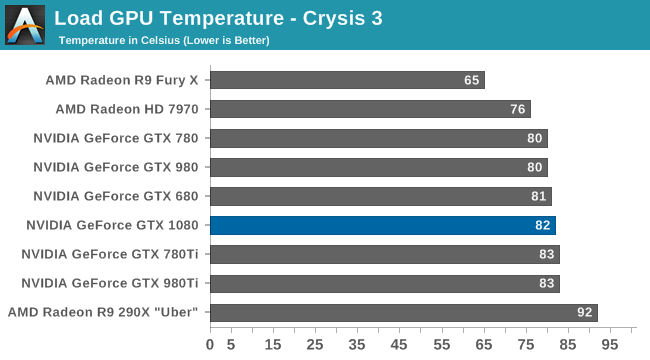
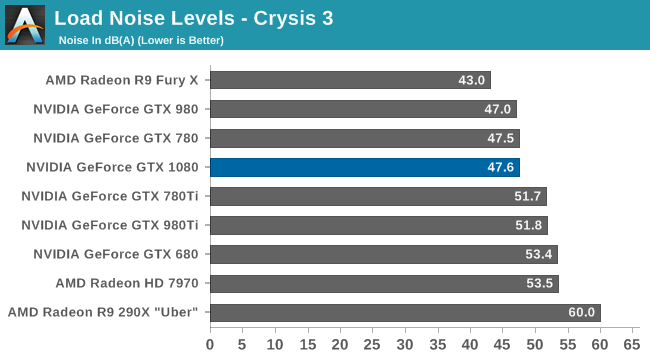
Otherwise from a design perspective the GTX 1080 Founders Edition carries on from NVIDIA’s high-end GTX 700/900 reference design, allowing NVIDIA to once again offer a superior blower-based solution. NVIDIA’s temperature management technology has not changed relative to Maxwell, so like their other cards, the GTX 1080 tops out in the low 80s for load temperature. More significantly, at 47.5 db(A) load noise, the card is on par with the GTX 780 and half a dB off of the GTX 980.
Ultimately NVIDIA has designed the GTX 1080 to be a drop-in replacement for the GTX 980, and this data confirms just that, indicating that GTX 1080’s much higher performance comes with only a slight increase in power consumption and no meaningful change in temperatures or acoustics.


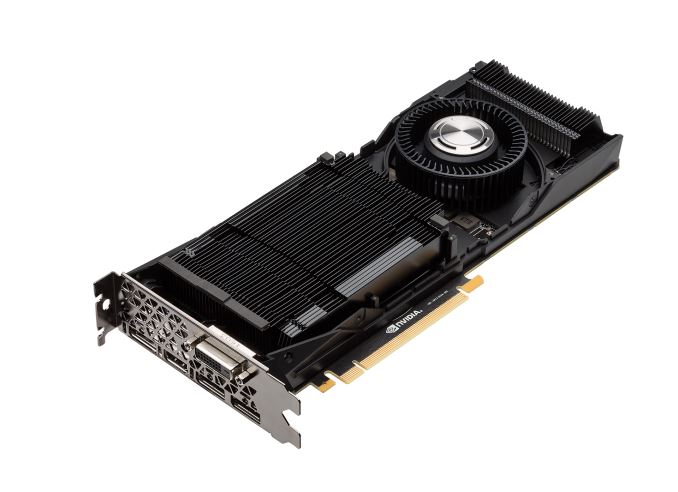








262 Comments
View All Comments
Ushio01 - Tuesday, May 17, 2016 - link
Could this be more underwhelming? guess I can skip this gen and keep my 670 for another few years.Jtaylor1986 - Tuesday, May 17, 2016 - link
This card exists in the zone of being overpowered at 1080P and 1440P and still a hair too slow at 4k in some titles. I guess we will have to wait until the big die 14/16nm gpus come out before we get no compromise 4k.FMinus - Tuesday, May 17, 2016 - link
If you have a 980Ti, overclock it (it probably already is) and it's going hand to hand with the stock 1080, no need to upgrade really.Looking at the reviews right now, I doubt the 1070 will even touch the 980Ti, and if they keep the EU pricing up, highly overpriced at 460-520EUR, for what it delivers. So I'm just gonna wait for what AMD brings to the table.
TheinsanegamerN - Tuesday, May 17, 2016 - link
Or wait for 3rd party models. Techspot showed pretty good gains from OCing, so the big coolers(or liquid cooling) that can hit 2+GHz are going to be where the 1080 shines.jasonelmore - Tuesday, May 17, 2016 - link
EU pricing is high because of VAT not currency exchange.BrokenCrayons - Tuesday, May 17, 2016 - link
If you're not trying to drive 4k resolutions, there probably isn't a compelling reason to upgrade from a 670 until the generation after the 10x0. I do agree that the 1080 strikes me as "yet another GPU refresh" because the performance increase isn't significant and the power/thermal numbers are only holding steady despite the more efficient FinFET process.I'm still interested in reading the full review, but at this point Ryan's comment about AMD's possible future plans - "Rather the company is looking to make a run at the much larger mainstream market for desktops and laptops with their Polaris architecture, something that GP104 isn’t meant to address." is far more interesting to me since I'd like to see the new process node put to use in laptops and in lower end portions of the GPU market.
DanNeely - Tuesday, May 17, 2016 - link
The GP106 (presumably 1060/1050) is due out in the fall.AMD will initially have the middle of the market to itself. It'll be interesting to see how well they're able to exploit it though. Not having a true flagship until Vega launches will hurt them among the large body of ignorant consumers who look at the headline numbers for top of the line cards because they're the most visible and buy based on that; a problem that's been dogging them for the last few years as nVidia has grown its market share.
The biggest question is if the lack of a flagship at launch is due to due to the unavailability of HBM (ie Vega doesn't have GDDR5/x memory controllers at all) or a deliberate decision to go for the center of the market first; or is an indicator that GloFo is struggling on 14nm yields. The latter is alarming if true; since it would mean that despite probably being able to crush nVidia in the mid-range for the next few months limited availability would prevent them from being able to exploit their lead effectively at a time when AMD desperately needs a cash cow generating win somewhere.
medi03 - Tuesday, May 17, 2016 - link
PS4k is to be released in October this year (major French retailer leak) so 14nm should be there.Also, remember that it's actually Samsung's 14nm.
BrokenCrayons - Tuesday, May 17, 2016 - link
Yes, there's no question that there'll be some lost sales over the impression of market leadership that spills over into unrelated segments where that competition for the fastest high end GPU isn't really relevant. Buyers who don't look at the value proposition of the specific product they're purchasing relative to its price bracket are pretty commonplace when it comes to computer components. I think it might hurt AMD's bottom line, but maybe not if the mid range volume is high enough to offset those lost sales.With respect to 14nm yields, I'd think that positioning the company to tackle the middle of the GPU price/performance market would be exceptionally unwise if there were problems with yield so I'd don't think it's worth worrying much about. Lower end GPUs use less wafer and that might offer an advantage, but lower priced cards sell in larger numbers typically than the top end cards so the demand will be higher and expectations for fab output might be higher as well. I'd like to think the decision is deliberate. AMD has also exhibited a history of targeting unfilled or less well served segments in order to find a niche that generates sales when they aren't in a position to lead in performance as demonstrated by their dropping out of the high end CPU market. That might be a bad strategy though since it hasn't done them any favors at retaining CPU market share and it does look like they're following a similar course with graphics.
I'm not sure what to think really, but I will be keeping an eye out for AMD's upcoming graphics products as they're released since they may offer more value for the dollar. I don't really need a lot of GPU since I keep resolutions low and use Steam's streaming exclusively now, but I would like to upgrade out of the GT 730 with a 16/14nm card that offers a little more of everything, but stays in a reasonable power budget.
Lolimaster - Tuesday, May 17, 2016 - link
Considering that the gpu in the current gen A10 APU's destroys your GT730. the 50w Polaris 11 will probably deliver around GTX960/370 performance.